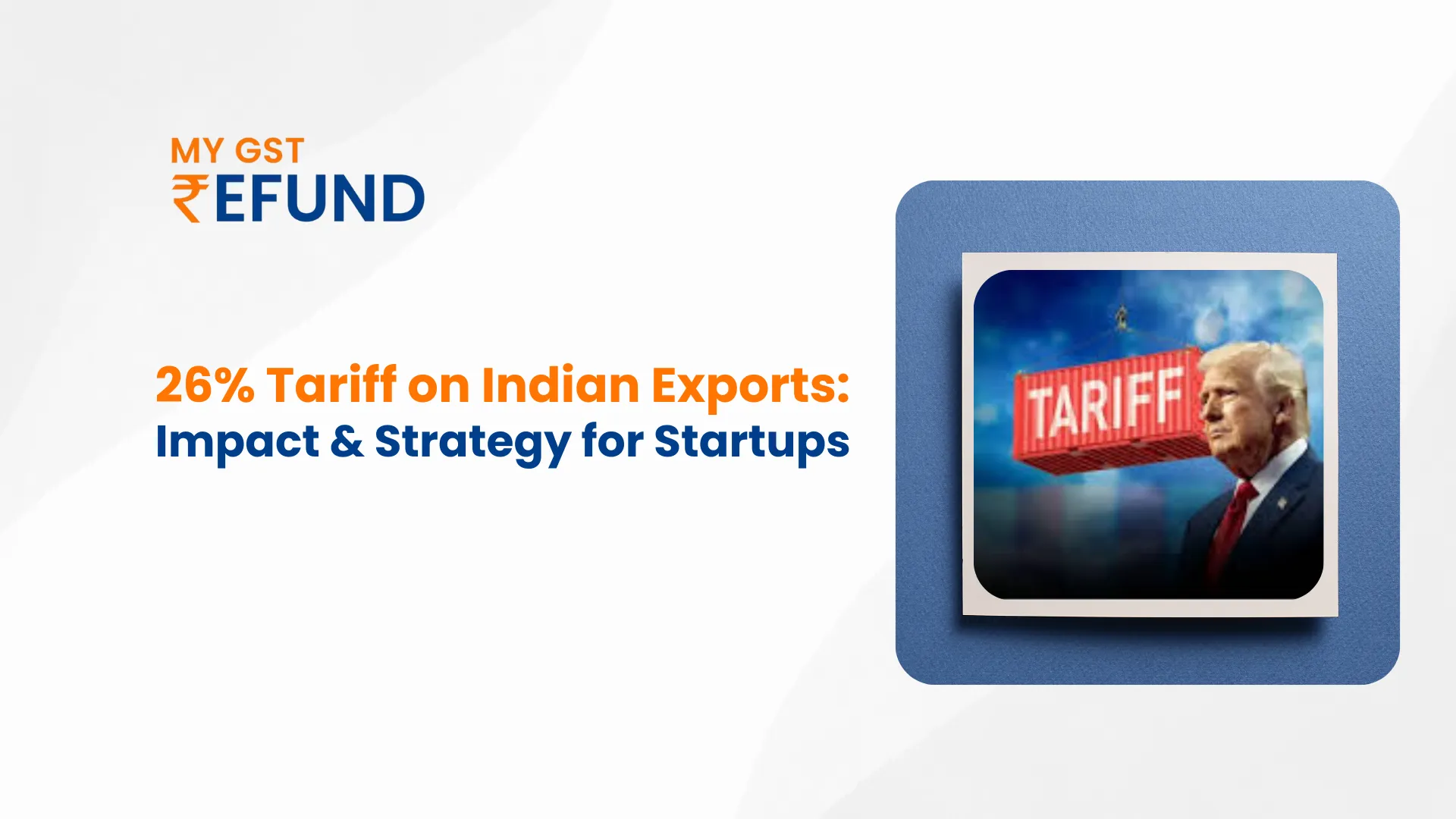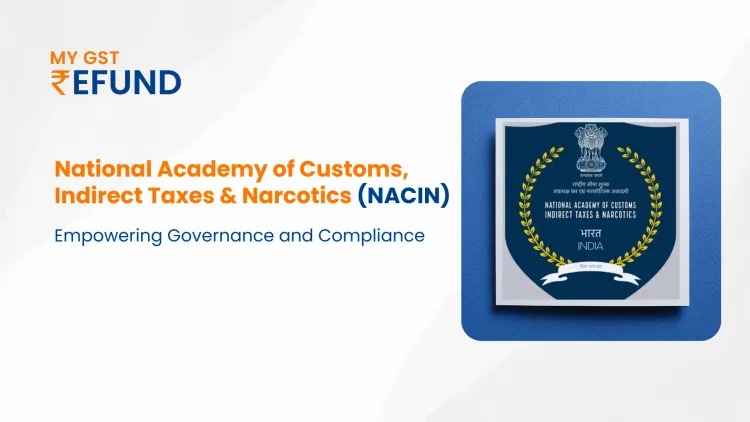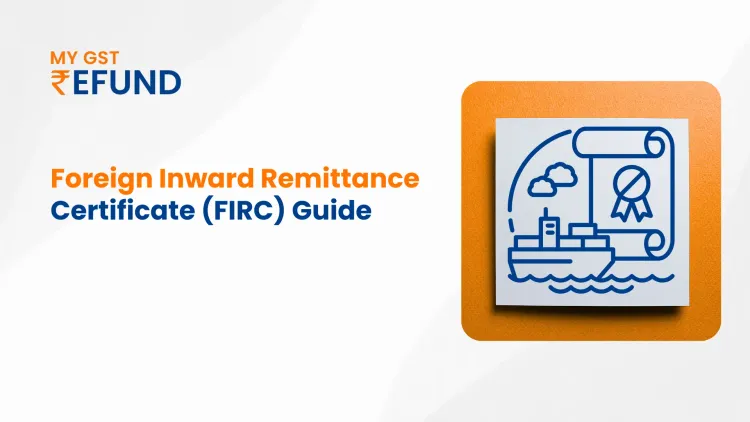26% Tariff on Indian Exports: What It Means for Startups and How to Respond
The U.S. has put a 26% tax on all goods from India starting April 9, 2025. This was announced on April 3 by President Donald Trump as part of his protectionist trade policy. The move mainly affects Indian exporters, especially startups and small businesses that don’t have the strength of big companies. Trump also plans a 10% tax on all imports worldwide, with higher taxes for some countries—34% for China and 46% for Vietnam.
While this is a big challenge for Indian exporters, it also gives India a slight edge over China and Vietnam, who now face even higher U.S. tariffs.
This blog looks at the reasons behind the move, how different sectors will be affected, and what Indian businesses can do to handle the situation.
What is the 26% tariff and why it is in news ?
Understanding Tariffs in Global Trade
Governments implement Tariffs as taxes that affect imported products. Governments implement tariffs to safeguard domestic industries and balance trade discrepancies while applying pressure on international nations. Local product competition improves as import taxes raise the prices of foreign products. Modern economic globalization has shown that tariffs function as an influential element to direct trade activities.
A 26% U.S. tariff facing Indian goods becomes a significant difficulty that harms both small business exporters and domestic exporters in India. This behavior belongs to a developing worldwide pattern which shows countries worldwide employing tariffs to safeguard their domestic markets. The FIEO president SC Ralhan explains that exporter businesses can manage 10% tariff levels yet anything beyond that amount creates serious obstacles especially for MSMEs.
Why did the U.S. impose this tariff?
During his recent India visit Trump explained that his country maintains low trade barriers since many decades yet India maintains 52% average rates on imports from the US. He asserts that this situation is unjustified which motivates him to find a remedy.
Moreover the U.S. government asserts that India implements powerful trade restrictions which block American exports into its markets. The removal of these trade barriers might lead to yearly growth in U.S. exports reaching $5.3 billion. The U.S. used currency manipulation as one of the deciding factors leading to the implementation of the 26% rate.
During active discussions in U.S.-India trade negotiations this action took place. Trump has declared that the trade barrier will remain in effect until India eliminates both its trade deficit and unfair market policies. This action serves as a potential pressure method instead of reflecting a lasting bureaucracy.
Which export sectors are most affected?
Key Sectors Likely Hit by the Tariff -
- The 26% U.S. tariff creates different levels of impact on exported goods. Agriculture together with gems and chemicals along with pharma and medical devices and electronics and machinery face the most significant impact from the 26% U.S. tariff. These sectors constitute a major portion of India’s international export revenues in the United States.
- Pharmaceutical companies which provide affordable generic medications might struggle to maintain their competitive position through higher business costs. Electronic exports are facing difficulties to maintain their competitiveness following recent market growth based on incentives.
- The current price competitiveness of textiles and garments is expected to diminish because of international market pressure. Engineering goods exported from India to the U.S. market will experience higher costs which will decrease market demand.
Immediate impact on Indian exporting Startups
1. Loss of Price Advantage
The imposed 26% tariff elevates the costs of Indian business exports in the U.S. causing significant damage to startups along with MSMEs that require affordable prices. The companies need to decide whether they should maintain their profit levels or implement price rises while accepting possible revenue reductions.
2. Drop in Buyer Confidence
The current market uncertainty leads U.S. customers to delay placed orders and even consider order cancellations. Mexican startups facing constant cash inflows will experience serious financial problems. Interruptions in trust or extended delays of deals will harm established commercial relationships.
3. Cash Flow Problems
New start-ups could experience operational cash flow problems because of low order numbers combined with delayed payments. A lack of both inventory and current sales requires them to find further loans. MSMEs face additional difficulties when seeking funding because of this challenge.
Strategic insights for exporters
Competing beyond price
Indian exporters possess an important motive to eliminate price-based competition because of current tariff conditions. Various startup businesses must now invest their resources toward creating better products with distinct features coupled with intellectual property rights or extra services. Indian businesses who provide products which American buyers cannot easily find elsewhere will develop a devoted customer base. Companies that bring innovation to the market and expand their services beyond price points gain better independence from price-only competition.
Adapting to trade uncertainty
The 26% tariff demonstrates that worldwide trade is transforming into an unpredictable and uncertain environment. Indian startups need to construct operational plans which incorporate unknown business fluctuations. Indian startups require preparedness with alternate strategies along with research into foreign markets and adaptable supply networks. Businesses should embrace policy alterations in global trade as routine occurrences which require them to modify their strategic plans for the long term.
Using trade intelligence
The modern business environment shows that reliable trade information provides organizations with significant market benefits. Startup companies should keep track of trade policy changes and learn about tariff procedures as they examine all potential exemptions. Organizations that stay informed about business developments can launch faster actions than their market rivals. Small businesses receive expert analytical services from export councils and trade bodies to enhance their operations through membership participation.
Managing cash flow smartly
The tariff change might result in diminished export orders together with delayed payments for numerous exporting entities. New companies need to handle their money effectively through faster payment collection as well as inventory regulation and cost management with extra caution. Businesses need to investigate the financial support programs provided by the government for exporters. Excellent financial management protects businesses during unpredictable situations by enabling improved decision-making during challenging periods.
Strategic responses to the tariff challenge
- Explore New Markets
Indian startups need to achieve international expansion by establishing sales operations across the UAE ASEAN Africa and Australia in order to reduce their business reliance on the United States market. These areas present expanding purchasing markets together with simpler trade conditions. The process of expanding business to new markets demands time and financial resources but results in lasting business stability. Before starting their market entry startups need to research local regulations alongside understanding customer requirements and market competition.
- Shift Towards Services and IP Exports
Services alongside digital products encounter less obstacles in export than physical products. Startups should transform their offerings into service-song combinations by integrating software platforms or subscription packages. Tech startups benefit from software sales and IP licensing arrangements because these models eliminate shipping problems together with regulatory issues. The process of exporting becomes more accessible since revenue generation is streamlined.
- Build Global Partnerships and Warehousing
The establishment of business partnerships with US or third-country firms enables startups to minimize trade barriers. Startup access to markets becomes easier when they establish joint ventures and operate through local distributors and production units. The storage of products within US borders or selected favorable countries decreases tariff expenses and risks. Small companies that want to remain affordable can join collective warehouse systems.
- Get ESG and Compliance Certifications
The contemporary buyer market gives equal weight to sustainability efforts and rule compliance. Receiving ESG and global compliance certifications enables startups to be more noticeable in the market. The combination of trust establishment and premium price functionality along with rule compliance verification makes their brand more appealing to customers. Global buyers will be attracted to startups through proper record maintenance and the promotion of their acquired certifications.
Policy support and financial tools exporters can use
Government incentives & export schemes
Numerous export assistance initiatives were created by the Indian government. The Foreign Trade Policy 2023 presents detailed export support guidelines to exporters. Startups can utilize the Interest Equalization Scheme because it provides them with loans at lower interest rates. MAI and TIES serve as export programs that build market access systems and develop export infrastructure. The RoDTEP scheme allows companies to seek tax refunds during production thus enabling better price competitiveness. Startups in smaller towns benefit from the “Districts as Export Hubs” program by utilizing it to assist local products in reaching global markets. Through its export promotion scheme the policy now embraces online sellers.
Efficient Use of Refund Systems
Businesses operating as startups should establish systematic tax refund procedures to enhance their operating funds. GST refund processing effectiveness enables startups to obtain funds that support business financial requirements. Working capital stability depends on the timely receipt of refunds therefore startup owners must execute every refund-related step accurately. Pocketing time and decreasing mistakes becomes feasible through the implementation of automated filing systems. Startups with constrained financial resources will benefit significantly from any improvements that happen to their refund procedure.
Conclusion
The 26% US tariff creates substantial hurdles for Indian exporters who particularly face difficulties because of their startups and small businesses operating within small profit budgets. The situation gives businesses an opportunity to institute enduring enhancements. Startups enduring success and growth will achieve it through market expansion and digital service adoption alongside partnerships formation and acceptance of government support mechanisms. Strategic focus on building trust should combine global certifications with better compliance. Indian startups should maintain flexibility and strategic planning to transform this hurdle into an opportunity for developing robust enterprises which base their competition on quality through innovation beyond bare pricing.
Key Takeaways
1. Use India’s Lower Tariff Advantage
The US imposes lower tariffs of 26% on India while restricting imports through China with 34% duties as well as Vietnam with 46% duties. The lower Indian tariffs offer startups an advantage which they should promote to gain US customers.
2. Focus on Innovation, Not Just Price
Companies should invest in research and development to develop original products while obtaining patents which will enhance user experience. This helps compete on value.
3. Sell in New Markets
International expansion can be achieved through focused business development in UAE and ASEAN nations as well as African and Australian markets in order to decrease US market dependence. Choose markets that actively purchase the products you offer.
4. Shift to Services and Digital Exports
IP assets can be made available through software packages or price-based subscriptions or by granting licenses to potential customers. Digital goods pose less difficulty than other goods when entering foreign trade markets.
5. Form Global Ties
Join forces with domestic companies to establish common distribution facilities across international borders. Lower expenses through market entry quickly become accessible to businesses.
6. Get ESG Certifications
Your business should establish clear documentation which demonstrates its environmental responsibility along with ethical practices. Obtaining ESG certifications and opting for trustworthy language allow you to raise product prices.
7. Use Government Help
Your company should apply to access the RoDTEP (tax refund) program and use Interest Equalization (cheap loans) schemes. Your company should automate GST refunds to improve cash flow operations.
8. Track Global Trade Changes
Regular monitoring of fresh tariffs and deals must be maintained. A swift reaction system shields your business from losses while providing opportunities for fresh prospects.
9. Turn Challenge into Growth
Your business should utilize this tariff problem to boost its operations. Quality improvement along with innovation combined with long-term business expansion must remain your organizational priorities.
Also Read :RoDTEP Scheme Explained: What Exporters Need to Know
Related Posts








